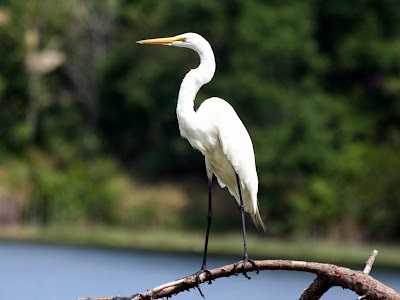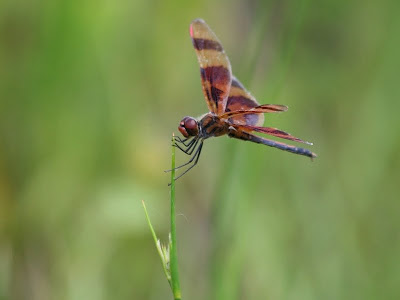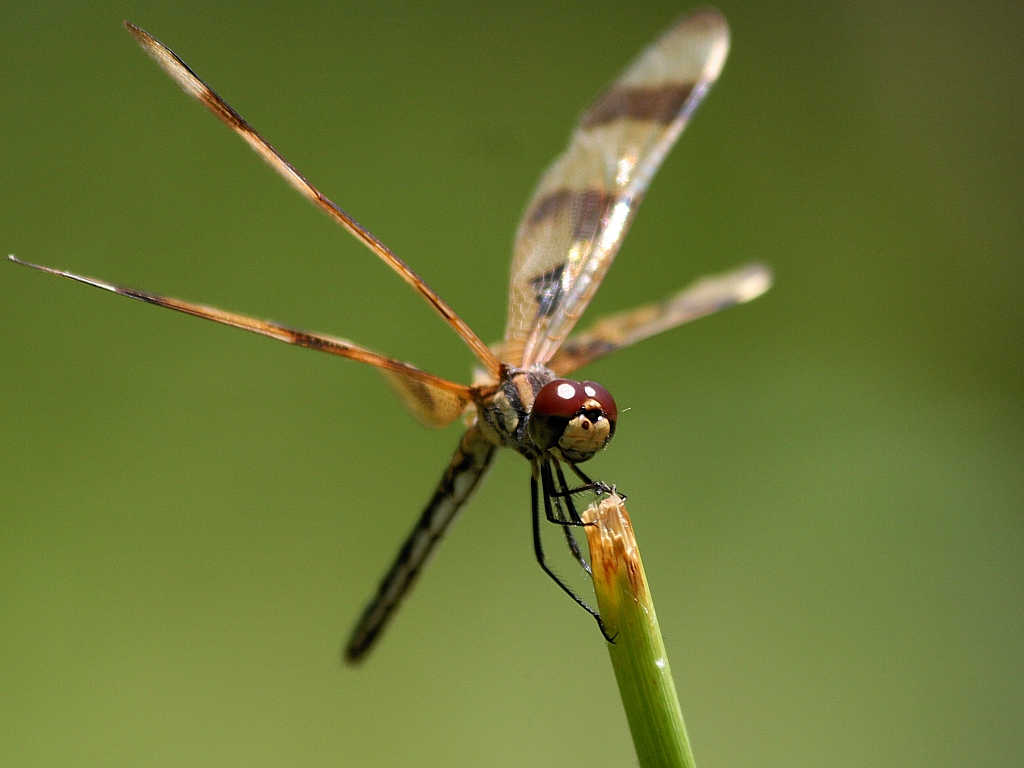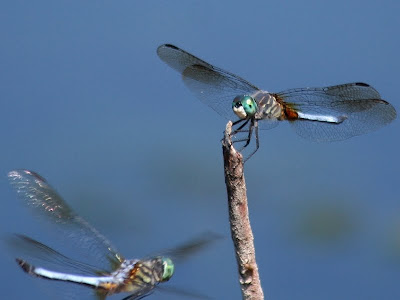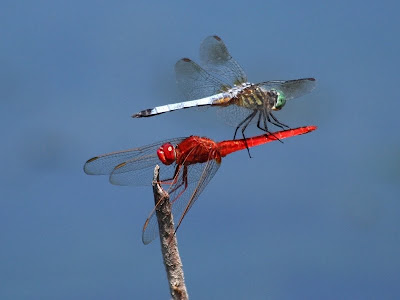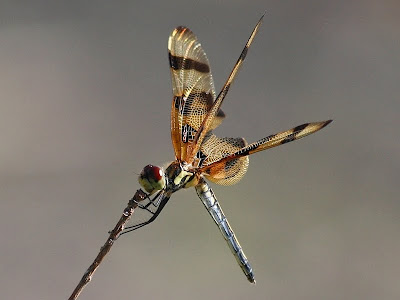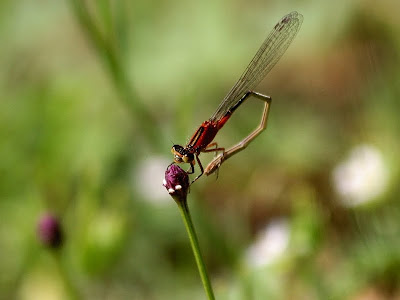One blog I visit every weekday during lunch is
Confessions of a Community College Dean. The author provides entertaining, work-related posts and has quite a large following, which makes the "comments" section a worthwhile diversion. Last week he spent one day
complaining about the foreign language requirement at his school and the very next day
arguing that typical college-level math classes were just as worthless for many AA-degree seekers. Those two posts—plus discovering a copy of my undergraduate transcript here in my office—made me think about my freshman year in college. I have concluded that although I must have learned a lot [I do remember reading, writing, taking exams, feeling great anxiety, etc.], I don't remember much of the
content of the classes I took.
What I Remember Best, Fall Term, 1981Elementary French: I can still picture the lovely silver-haired
madame puffing on a cigarette as she stood in the door frame, blowing smoke into the empty hallway, while she proctored our exams or waited for us to scribble answers in our workbooks. I thought she was the epitome of cool and worried that I personally disappointed her whenever I failed to score a 100 on an assignment. The class was too easy for me—I should have taken Intermediate French—but the one section that was offered conflicted with Conversational Russian. The professor of
that class, Colonel Ed, an authoritative ex-Marine, was also my academic advisor. He pressured me to take Russian every semester until he retired two years later.
Current knowledge of French = miniscule
Crush on teacher = immense
Precalculus Mathematics: Whenever my classmates and I were especially annoying in our mathematical ignorance, our nerdy professor turned to the blackboard and her scribbled formulae, lamenting that numbers were her only
real friends. I remember that the first half of Precalculus was a repeat of high school math, so I quit attending regularly, as I was easily making
As on exams. When the class began new material, I was not there to notice and never able to catch up. Thankfully, half a semester of
As and half a semester of
Fs averaged to a
C+ for the course and the end of my math torture.
I would not know where to begin if someone put a first-day problem from Precalculus in front of me today. I do know that if I had a copy of the textbook, I could figure the problem out. As a student, I never read math textbooks. [Some of my undergrad professors would say I overwrote that last sentence, that
math made it wordy.] But having taught myself over the years a number of new things without formal classroom training, I have learned that looking over printed explanations can usually provide the answer. I am a big fan of the
For Dummies series.
Current knowledge of precalculus = zero
Likelihood I could figure it out, if motivated = high
Likelihood I would be motivated to figure it out = low
Conversational Russian: I still have a handful of ever-handy phrases—"Hello, how are you?" "Good." "Goodbye." "Do you speak Russian?" "Yes, I speak Russian." "Give me some black bread, please." "Thank you." If I were to listen all the way through "
Katyusha," a Russian wartime song, I could probably sing it accurately at a karaoke bar. I remember having to sing "Katyusha" at least once every other class for five semesters.
Current knowledge of Russian = laughable
Likelihood I would embarrass myself at a karaoke bar = high
Essentials World Civilizations: I remember that I made the mistake of writing "The ancient Egyptians had a fetish about death" on an essay exam, and my professor circling
fetish and snidely commenting that I needed to consult a dictionary to use the word correctly. I immediately understood that college professors, unlike high school teachers, wanted papers that had more than correctly spelled words. The professor for this class was a brilliant lecturer—even though PowerPoint wasn't invented, even though all he had was a collection of brightly colored flip maps at the front of the room—so I made the mistake of taking him again for Winter Term, one month of intensive study in a single class.
Current knowledge of ancient cultures = high [reinforced, though, by graduate work and self-study]
Opportunities to use
fetish correctly in daily speech = few, alas
What I Remember Best, Winter Term, 1982The Russian Revolution: Mesmerized by the melodic voice and scope of knowledge of Dr. Eaton, I took a senior-level history seminar winter term of my freshman year. I remember that I had to get his written permission to register. Dr. Eaton may have tried to dissuade me but signed the form in the end, despite the evidence that I didn't know how to use
fetish correctly. Instead of a superficial textbook that covered all of human history as we had used in Essentials World Civilizations, I was assigned primary sources, like the writings of Trotsky and Lenin, or detailed historical analyses by highbrow scholars. I was in
way over my head, afraid to say anything in a class full of anarchist history majors, afraid to ask for help after class and risk appearing stupid. We had a major research paper as our only grade. Of course, I had never written a research paper before, further proof of the poor public education in the South. I bought a handbook and puzzled out footnotes and the bibliography. Dr. Eaton gave me a generous
B-, perhaps out of guilt from having signed the permission form in the first place. I don't even remember the subject of that 20-page paper.
Current knowledge of the Russian Revolution = too painful to determine
Inspiration after this class to become a history major = low
What I Remember Best, Spring Term, 1982Freshman Rhetoric & Composition: I remember staring at the classroom door, waiting for the department secretary to poke her head in. She came often to say that our professor was blowing us off
again but to begin the new essay even though we had no guidelines. "He says to tell you to read the handbook if you have any questions!" she would advise. Dr. Phillips was the resident Southern literature expert, so he found the one composition class he taught—
us—a real drag, not really worth his time. To be perfectly honest, though, we didn't find the course worth our time either. The college mandated that the
bad freshman writers take composition in the fall. We knew that our spring term placement meant that the college considered us the
good freshman writers. We thought we already knew everything and wondered why no one had offered us a book contract yet.
Current knowledge of essay writing = high, no thanks to Dr. Phillips
Frequency of employing the techniques of Dr. Phillips in my own composition classes = never
World Religions: Far Eastern: Any chance that I would return to regular worship at the Methodist church ended after a semester of lively discussions with the professor of this class, the Dean of the Chapel. Finally, I thought, religions that made sense! Religions that offered logical explanations for the existence of suffering and imperfection! I loved the idea that we have many lives to fix mistakes and get things right, instead of being tossed into hell after sixty or so short years. As a poor college student struggling to pay for things, I loved the idea that all suffering is the result of wanting what we cannot have, and that we should try to stop the
desire, not exhaust ourselves trying to
satisfy it.
Current knowledge of far Eastern religions = high
Mom's worry that I would join a cult while taking the class = high
Elementary Russian:A typical class* went like this:
Colonel Ed: Hello, How are you?
A student: Good, thank you.
Colonel Ed: Do you speak Russian?
A different student: Yes, I speak Russian.
Colonel Ed: Would you like some black bread?
A third student: Yes, give me some black bread, please. Thank you.
Colonel Ed: [hitting play button on tape recorder] Okay, let's sing "Katyusha."
Students: [in unison] Расцветали яблони и груши,
Поплыли туманы над рекой ...
Colonel Ed: Goodbye!
Students: [in unison] Goodbye!
*translated from Russian
Current knowledge of Russian = greater than current knowledge of precalculus
Opportunities to ask a Russian speaker for black bread = zero
Elementary Spanish: To explain my third language in a single year, let me say that I fancied myself a writer/world traveler after college graduation and began the requirements [soon abandoned] of a foreign language major. I remember best that the professor for this class insisted that we clock in and out of the language lab, amassing a specific number of hours per week there. During one trip to a carrel with headphones, I discovered a tape with a recording of "
Guantanamara," a famous Cuban song. Every future hour in the lab I spent listening exclusively to this song: finding the place on the tape, listening, rewinding, listening again, rewinding—you get the picture. If the lab staff heard the song escaping from my headphones
every day I was there, no one confronted me to get on task.
Current knowledge of Spanish = un pocotito
Ability to pretend that I am paying attention in department meetings while I am in fact singing "Guantanamara" in my head = off the charts
Humanities: Classic to Romantic: I remember many things about the art, literature, and philosophy of the Classic and Romantic movements. I made many good friends in this class and spent all of my free time on campus discussing/debating the ideas and works we explored. This class
ruled my spring semester. My strongest memory, however, is the frustration trying to please the two professors who taught the course. The first month, we listened to the philosophy professor [who paced
on the conference table around which we sat]; then we took an essay exam which he graded. Everyone found it impossible to answer all of the questions in the time we were given. When Professor No. 1 returned the essays, he chastised us for not completing all of the exam. We cried that there was no way to write good essays for all of the questions. He countered that he didn't want
essays, just
answers. We sucked up our
Cs and spent the next month listening to the literature professor who made up the second half of the team. At the end of
his turn, we took our second exam. This time we didn't worry about titles, engaging introductions, carefully crafted thesis statements and the like; we just wrote answers—to
all of the questions. When Professor No. 2 returned
this set of exams, he chastised us for forgetting everything our composition classes had taught us about good writing.
But Professor No. 1 said the answer, not the writing, was important, we cried. We could not convince the literature professor that we felt betrayed by the team-teaching experience and sucked up more
Cs. For the final exam, we demanded that they make their expectations clear before we wrote that last time. I ended up with a
B in the class, but I doubt that they even opened the blue books, basing their grades on some holistic evaluation of our overall performance, so they could watch TV.
Current knowledge of Classic/Romantic movements = high
Grade I should have received = A+
Looking back on that first year as an undergrad, I realize that it didn't really matter what I took. Having to weigh skipping a class against all the money tuition cost, having to be more responsible than any high school class ever required, having to please people who expected more of me than anyone else ever had, operating within and testing new boundaries, learning to please different personalities—those were the
real lessons.
![Male four-spotted pennant [Brachymesia gravida]](https://blogger.googleusercontent.com/img/b/R29vZ2xl/AVvXsEjylVcF8Lx8msafukB78RI6bMcNWWIifubO73uyee6qiEodejo7TdruHcagNUm1DPY88KbfGqNMhNFIkhffe4TUwGAF9Q9CIfo9LBAKfw0EBAyvVmp2-P4KDq1ipWk93KlVjuOcTyr_tE3U/s400/05_31_2006_01.jpg)
![Male four-spotted pennant [Brachymesia gravida]](https://blogger.googleusercontent.com/img/b/R29vZ2xl/AVvXsEj5atIRRE1mYsoEEww3P747c2xwV1OpNlAx97nCEIXpqwl5vV9MQ7TJU0xX8633tJkbyqqTN-IYOfOCe1p2TGsvPULd-qsgkVWWGBEwodPfI97TQfpVcQ1SqqQoOYzWgt_5cFNgHAMboYS9/s400/05_31_2006_02.jpg)
![Immature male four-spotted pennant [Brachymesia gravida]](https://blogger.googleusercontent.com/img/b/R29vZ2xl/AVvXsEgZ1RirzW896n6fTZ0tYxlge7BgtQ5RxRjJAgR_wWpiTa-7HuMlEQ8QngnZbeuIq-EG-BlZT6J2qpxz9bHxQNTKELjGT_vV9LcN3jrD51noudwBn2FOF79Hq098JAs7rWyIZ1AtI9nbj8wq/s400/05_31_2006_04.jpg)
![Immature male four-spotted pennant [Brachymesia gravida]](https://blogger.googleusercontent.com/img/b/R29vZ2xl/AVvXsEilD5UbEiiRQ9iBV2EaP77vg5N6Z73t3QbGFXfI60BOnTINSRdIhWWfW4Ey63Kg2nFrCW5QKyMilVcINnTmN6_JeWPapee8EAAhSP_ZNUPF8L6DkBJkw3uQYmqLn4VVFG7pekgNxHbZUIwV/s400/05_31_2006_03.jpg)
![Immature male four-spotted pennant [Brachymesia gravida]](https://blogger.googleusercontent.com/img/b/R29vZ2xl/AVvXsEjrwzJtQ5V91MqJ1ASL-oqPCgESu_xpyih98lIoDHsYeL83Jf5RM3jFP4XDL_JiBUuVvYiZHzp0jug_ccRrrFNi0MsZhtUnf7V6XCwKyKHBcObjZkpssjQguUdUDJVaSkt3lUBoEv_l8ox4/s400/05_31_2006_05.jpg)




